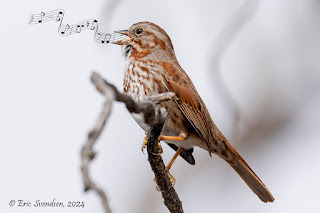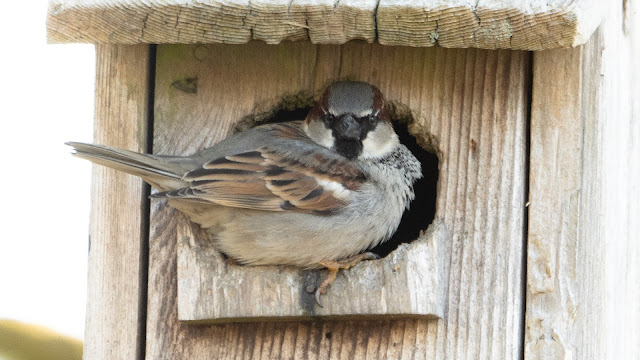Song sparrow songs mark the beginning of spring.

Song sparrows range over much of Canada and the US, but not all year. Many in the lower east and midsouth migrate to northern locations when spring is near. Central US and western birds may reside the entire year. For a range map, click here . I don't usually hear their familiar call during the winter months, either because they are absent altogether or because breeding season has not yet started. However, their voices were loud and clear yesterday when I visited Munson Pond here in Kelowna, BC. Although song sparrows have quite a varied plumage over their range, their song during breeding often starts with three notes followed by a series of twittering and warbling. You can hear their song by clicking here . Although their song is not particularly melodious or pretty, it is distinctive enough to be readily identifiable. I have not developed a good ear for being able to identify many birds by their song, but I am familiar enough with song sparrows. They do, however, possess






